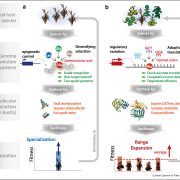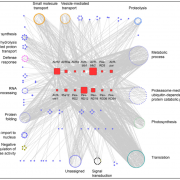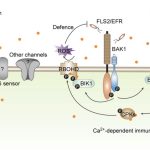An N- terminal motif in NLR immune receptors is functionally conserved across distantly related plant species (bioRxiv)
 Plants have robust NLR (nucleotide-binding, leucine-rich repeat proteins) immune signaling networks consisting of sensor NLRs and helper NLRs that counteract diverse plant pathogens by inducing cell death at sites of pathogen infection. A recent preprint by Adachi et al. has defined an N terminal motif (MADA motif) that contributes to NLR-mediated cell death. By using in vitro Mu transposition insertion mutagenesis, the authors revealed a 29 amino acid region in the helper NLR NRC4 that on its own induces cell death. This motif is 50% identical in NLR ZAR1 and is also in 20% of the CC-NLRs found across dicot and monocot species. MADA swapping experiments have shown that the ZAR1 a1 helix and the N-termini of other MADA-CC-NLRs can not only functionally complement NRC4-mediated cell death activation but can also confer resistance to pathogens. Hence, this work provides new avenues to understand plant immune activation and resistance signalling, which ultimately can be harnessed to curtail pathogen-associated crop loss. (Summary by Amey Redkar) bioRxiv. 10.1101/693291
Plants have robust NLR (nucleotide-binding, leucine-rich repeat proteins) immune signaling networks consisting of sensor NLRs and helper NLRs that counteract diverse plant pathogens by inducing cell death at sites of pathogen infection. A recent preprint by Adachi et al. has defined an N terminal motif (MADA motif) that contributes to NLR-mediated cell death. By using in vitro Mu transposition insertion mutagenesis, the authors revealed a 29 amino acid region in the helper NLR NRC4 that on its own induces cell death. This motif is 50% identical in NLR ZAR1 and is also in 20% of the CC-NLRs found across dicot and monocot species. MADA swapping experiments have shown that the ZAR1 a1 helix and the N-termini of other MADA-CC-NLRs can not only functionally complement NRC4-mediated cell death activation but can also confer resistance to pathogens. Hence, this work provides new avenues to understand plant immune activation and resistance signalling, which ultimately can be harnessed to curtail pathogen-associated crop loss. (Summary by Amey Redkar) bioRxiv. 10.1101/693291









